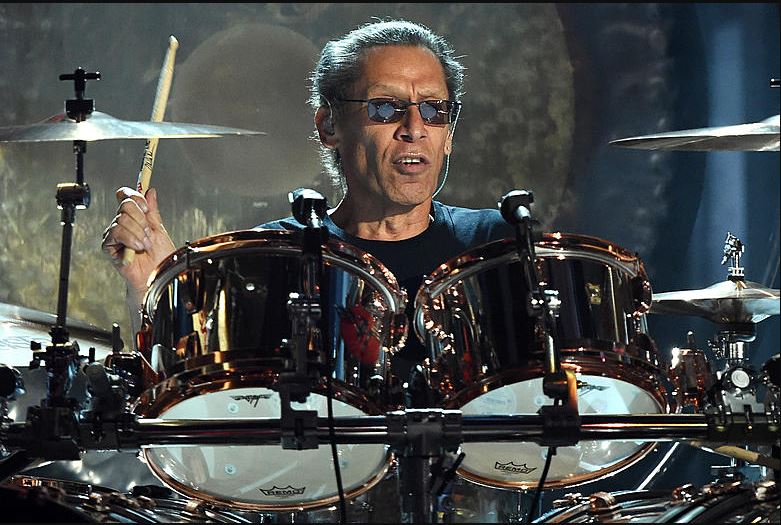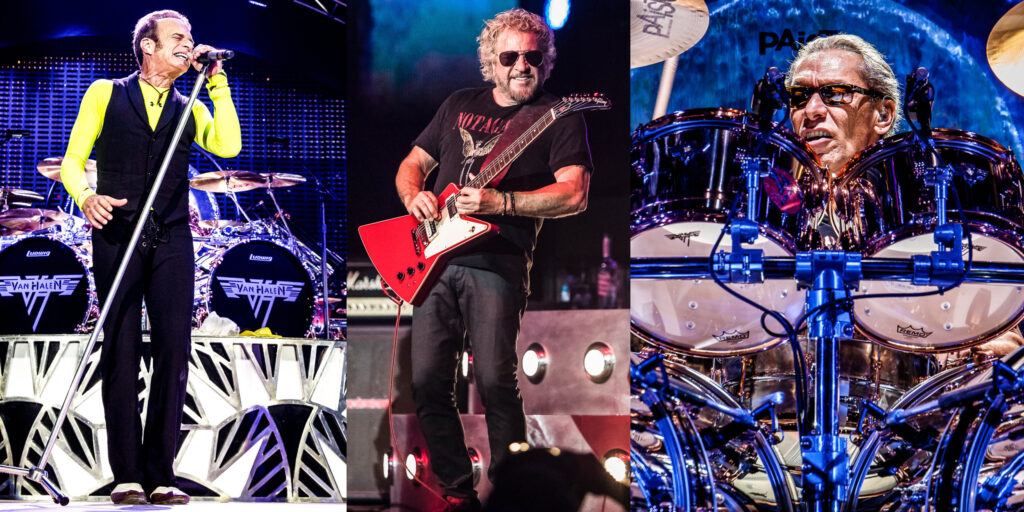
In music lore and among rock and roll urban legends, Van Halen’s infamous “no brown M&Ms” rider clause stands out as a classic.
Today, the concept of wild celebrity contract rider clauses is well-known and oft-discussed, but Van Halen’s “no brown M&Ms” rider is basically the blueprint for this pop culture point of intrigue.

Back in the 1980s and before the widespread introduction of the internet, rumors about Van Halen’s contract rider and its purportedly unreasonable demand spread by word of mouth.
At the outset of this legend’s spread, the crux of the rumor was evident — that Van Halen and its stars, Eddie Van Halen and David Lee Roth, stood as perfect examples of demanding, out of touch rock stars who wouldn’t think twice about inflicting pointless and mercurial demands on the overworked staff of concert venues the world over.
This implication is present in one early retelling of the tale, in which the members of Van Halen supposedly damaged a venue in an unhinged rage when they were exposed to brown M&Ms:
“Van Halen tends to make the news portion of radio more often than it gets airplay.
“There was the M&M riot in New Mexico where the band did thousands of dollars of damage to a hall when they were served brown M&Ms — their contract said the brown ones had to be removed.”
Currently, “outrageous tour rider demands” are almost seen as a point of pride in some contexts (as are “humble” riders, like Taylor Swift’s), as if it’s an indicator that stars like Katy Perry have “truly arrived,” illustrated by the bizarre requests celebrities apparently have no qualms about making:
“During Katy Perry’s 2011 world tour, she provided a 45-page tour rider to her promoter with a list of demands.
“Perry’s demands for her dressing room included a full-length mirror, a refrigerator with a glass door, an arrangement of pink, white, and purple hydrangea, pink and white roses, and peonies.
“Perry added that if these flowers were unavailable, a selection of seasonal white flowers would be acceptable, but absolutely no carnations.”
A case could be made that Van Halen’s “no brown M&Ms” infamy is the reason such clauses are viewed as a signal of A-list status, but the story of their “wacky tour rider” clause is far more interesting than the clause itself.
As noted above, the story of Van Halen’s “no brown M&Ms” tour rider clause circulated well before Twitter and Facebook enabled rumors to spread as quickly as they do today.
By the same token, even before the advent of “fake news,” we’d become accustomed to using the internet not just to spread information, but to verify it.
In the 1980s, people were far more credulous and less inclined to question a story like this — especially if the story was, like this one, even marginally plausible.
Moreover, that decade was marked by excess and hedonistic behavior, and it was the height of “hair band” popularity to boot.
Irrespective of the reasons why, it was eminently believable that a big metal band like Van Halen would insist upon such a thing just for the heck of it against the backdrop of the ’80s.
Back in 2008, The Smoking Gun (TSG) – one of the internet’s earliest resources for hard-to-find celebrity information like legal documents and arrest records – published “Van Halen’s Legendary M&M’s Rider,” and the article’s very first line underscored the prominence of the Van Halen legend:
Behold the Holy Grail.
TSG indicated that between when they started sharing concert tour riders in 1997 and 2008, that they’d “been searching for the most famous rider of them all, the one in which Van Halen famously stipulated that brown M&M’s were to be banished from the band’s dressing room.”
And in December 2008, they finally got their hands on a copy, validating not only that Van Halen’s 1982 tour rider was real, but that it did indeed stipulate no brown M&Ms were to be permitted backstage:
“TSG has finally obtained the 1982 Van Halen World Tour rider – typewritten and 53 pages long – containing the M&M prohibition (and a few other unique demands).
“The document, which we’ve excerpted here, also stipulated that promoters provide the group with ‘herring in sour cream,’ four cases of ‘Schlitz Malt Liquor beer (16 ounce cans),’ and a total of eight bottles of wine and liquor.”
So Van Halen’s “no brown M&Ms” demand was definitively real — but the other half of the rumor, the reason why, wasn’t what fans thought.
Urban legends like the one about Van Halen’s ban on brown M&Ms typically spread for reasons beyond intrigue, like a long-circulating rumor that Alanis Morissette wrote “You Oughta Know” about Full House’s Dave Coulier.
The Alanis urban legend’s staying power came down to how unlikely the pairing it involved seemed in the late 1990s.
Similarly, the Van Halen rumor was of interest primarily because it seemingly confirmed our suspicions that rock legends were insufferable divas, out of touch and more than happy to task “the little people” backstage with pointless but time-consuming fool’s errands.
And as seen in the example excerpted above, it implied Van Halen was not just handing down overly demanding edicts, they were also leveraging their power and allegedly using small requests as an excuse to lash out at people who were just trying to do their jobs:
If you take the “entitled divas” element out of the tale, it becomes less interesting — a big part of the legend’s appeal was its tacit mockery of the rich and famous.

Van Halen’s infamous tour rider dated back to 1982, and it was a huge part of rock lore.
In 1997, Van Halen’s former vocalist David Lee Roth published a memoir, Crazy From The Heat, about Roth’s life and career.
Crazy From The Heat addressed Van Halen’s “no brown M&Ms” clause, and Roth’s comprehensive explanation for it was not what people expected.
It began, detailing the complexity of staging Van Halen concerts in 1982:
“Van Halen was the first band to take huge productions into tertiary, third-level markets. We’d pull up with nine eighteen-wheeler trucks, full of gear, where the standard was three trucks, max.
“And there were many, many technical errors — whether it was the girders couldn’t support the weight, or the flooring would sink in, or the doors weren’t big enough to move the gear through.”
As Roth noted, venues could be unpredictable and inconsistent, a particular concern for an act of their size and standing.
Van Halen came into town with a massive production and several semi-trucks, and often found legitimate risks to the safety of the band, the crew, and the crowd when they arrived.
He continued, first describing technical stipulations about voltage, ones you’d expect in such a document, and noted that they were highly specific:
“[By 1982, Van Halen’s] contract rider read like a version of the Chinese Yellow Pages because there was so much equipment, and so many human beings to make it function.
“So just as a little test, in the technical aspect of the rider, it would say ‘Article 148: There will be fifteen amperage voltage sockets at twenty-foot spaces, evenly, providing nineteen amperes …’ This kind of thing.
Of course, stipulations about safe electrical equipment handling were super reasonable, and no one would call anyone a “diva” for including them.
Van Halen seemed to recall the old adage about how the “devil is in the details,” and Roth confirmed the clause was both real and purposefully hidden in “the middle of nowhere,” at “article number 126”:
There will be no brown M&M’s in the backstage area, upon pain of forfeiture of the show, with full compensation.
Roth continued, arriving at the “why” of Van Halen’s “crazy contract clause,” which was both clever and borne of concern for the safety of all involved:
“So, when I would walk backstage, if I saw a brown M&M in that bowl … well, [then we knew we’d have to] line-check the entire production. Guaranteed you’re going to arrive at a technical error.
“They didn’t read the contract. Guaranteed you’d run into a problem. Sometimes it would threaten to just destroy the whole show.
“Something like, literally, life-threatening.”
His assertion that Van Halen’s diligence was to ensure something “like, literally, life-threatening” was caught before it hurt someone was unquestionably grounded in reality, particularly in 1982.
Back in 1977, 165 people were killed at a venue in Beverly Hills, and in 1979, eleven people died at The Who’s concert.
In more recent years, deadly incidents at concerts and festivals have reminded us that crowds still can and do turn lethal on a dime, such as the crowd-crush tragedy at Astroworld in 2021.
In 2008, a Van Halen site published more of that excerpt from Roth’s book, where he provided an example of such an oversight causing $80,000 worth of damage.
At the end of the passage excerpted, Roth alluded to the aspersions long cast on Van Halen over the infamous rider, quipping:

Well, who am I to get in the way of a good rumor?
Van Halen’s “no brown M&Ms” concert rider was real, but the real reason behind it wasn’t always common knowledge — as Roth eventually disclosed, the presence of brown M&Ms was not due to a whim, but rather, it served as a bellwether, signaling to the band that they couldn’t trust the venue to provide a safe performance environment.

Leave a Reply